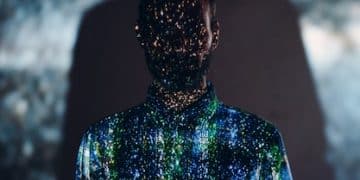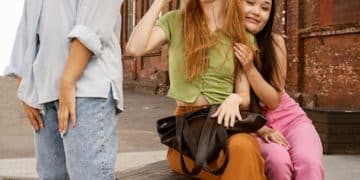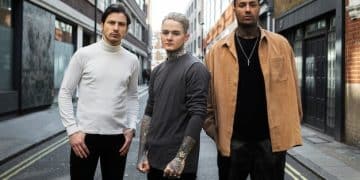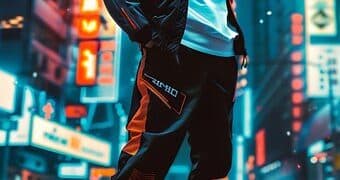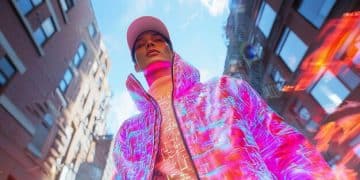Decoding the 2025 Urban Style Shift: Your Style Forecast
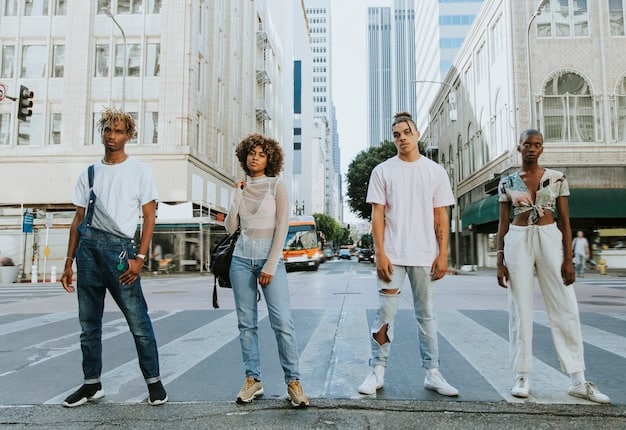
Decoding the 2025 Urban Style Shift: 5 Key Trends You Need to Know Now unveils the anticipated fashion evolutions, spotlighting sustainability, tech integration, personalized expression, and comfort as pivotal elements shaping future urban aesthetics.
Get ready to navigate the future of fashion! Decoding the 2025 Urban Style Shift: 5 Key Trends You Need to Know Now offers a glimpse into the emerging aesthetics that will define urban landscapes, ensuring you stay ahead of the curve.
The Rise of Conscious Consumption
The fashion industry is undergoing a profound transformation driven by increased environmental awareness and ethical concerns. This shift towards conscious consumption is set to redefine urban style in 2025.
Consumers are becoming more discerning, seeking out brands that prioritize sustainability, fair labor practices, and eco-friendly materials. This demand is reshaping the fashion landscape, fostering innovation and creativity in sustainable design.
Sustainable Materials and Practices
The cornerstone of conscious consumption lies in the use of sustainable materials and ethical production practices. Brands are increasingly adopting recycled, organic, and innovative materials to minimize their environmental footprint.
The Impact of Circular Fashion
Circular fashion models, such as clothing rental, resale, and recycling programs, are gaining traction among urban consumers. These initiatives promote the longevity of garments, reduce waste, and encourage a more sustainable approach to fashion consumption.
- Upcycled Clothing: Reclaimed materials transformed into unique, high-fashion pieces.
- Plant-Based Fabrics: Innovative textiles derived from renewable sources like bamboo, hemp, and pineapple leaves.
- Ethical Production: Brands ensuring fair wages and safe working conditions for garment workers.
- Transparency in Supply Chains: Openly disclosing the origins and processes behind their products.
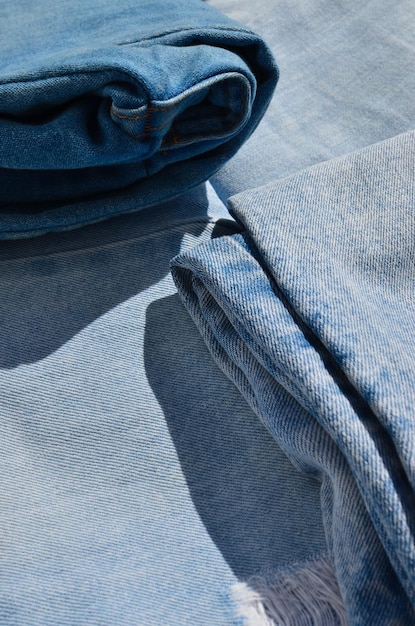
Conscious consumption is not merely a trend; it’s a fundamental shift in values that will shape the future of urban style. As consumers prioritize sustainability and ethical considerations, brands will need to adapt to meet these evolving demands.
Tech-Integrated Fashion
Technology is no longer confined to gadgets; it’s seamlessly integrating into the very fabric of our clothing. In 2025, tech-integrated fashion promises to be a significant trend in urban style, offering both functional and aesthetic enhancements.
From smart fabrics that regulate body temperature to wearable devices embedded in clothing, technology is poised to revolutionize how we interact with our garments. This fusion of fashion and technology is creating new possibilities for personalization, comfort, and performance.
Smart Fabrics and Wearable Tech
Smart fabrics embedded with sensors and microchips are capable of monitoring health metrics, adjusting to environmental conditions, and even changing color. Wearable tech seamlessly integrated into clothing offers functionalities ranging from fitness tracking to navigation.
The Personalization of Fashion
Technology enables a new level of personalization in fashion, allowing consumers to customize their garments to reflect their individual preferences and needs. From digitally printed designs to tailored fits based on body scans, the possibilities for personalization are virtually limitless.
- Interactive Displays: Clothing with embedded LED screens displaying customizable patterns and messages.
- Climate-Adaptive Apparel: Garments that automatically adjust insulation levels based on weather conditions.
- Health-Monitoring Textiles: Fabrics that track vital signs and provide real-time feedback on wearer’s well-being.
- GPS-Enabled Accessories: Stylish accessories with built-in GPS tracking for added safety and convenience.
Tech-integrated fashion represents a paradigm shift in the industry, blurring the lines between clothing and technology. As innovations continue to evolve, urban consumers can expect garments that are not only stylish but also intelligent and responsive to their needs.
Hyper-Personalization and Individuality
In 2025, urban style will be defined by a celebration of individuality and hyper-personalization. The era of mass conformity is fading, and consumers are embracing unique self-expression through fashion.
Driven by social media and a desire to stand out, urbanites are curating their wardrobes with eclectic pieces that reflect their personal stories and identities. This trend is fostering creativity, experimentation, and a rejection of conventional fashion norms.
The Rise of Eclectic Style
Eclectic style involves mixing and matching different eras, aesthetics, and cultural influences to create a unique and personalized look. This approach encourages creativity and allows individuals to express their multifaceted identities through fashion.
Embracing Body Positivity
The body positivity movement is challenging traditional beauty standards and promoting inclusivity in fashion. Urban consumers are demanding greater representation of diverse body types and celebrating their unique features through fashion choices.
- Customizable Clothing: Brands offering options to tailor garments to specific body shapes and preferences.
- DIY Fashion: Individuals creating their own clothing through upcycling, sewing, and other crafting techniques.
- Vintage and Secondhand Finds: Unique and one-of-a-kind pieces that add character and personality to wardrobes.
- Statement Accessories: Bold and eye-catching accessories that reflect individual tastes and interests.
Hyper-personalization and individuality are empowering consumers to embrace their authentic selves and express their unique identities through fashion. As urban style evolves, it will increasingly reflect a diverse tapestry of personal stories and creative expressions.
The Comfort Revolution
Comfort is no longer a compromise in fashion; it’s a fundamental requirement. In 2025, the comfort revolution will continue to reshape urban style, prioritizing ease of movement and relaxed silhouettes.
Driven by busy lifestyles and a desire for practicality, urbanites are gravitating towards comfortable clothing that doesn’t sacrifice style. This trend is fostering the development of innovative fabrics, ergonomic designs, and versatile garments that seamlessly transition from work to leisure.
Athleisure and Loungewear Influence
The athleisure trend, which blends athletic and leisure wear, continues to influence urban style with its emphasis on comfort, functionality, and versatility. Loungewear-inspired pieces, such as oversized sweaters, relaxed pants, and comfortable jumpsuits, are becoming wardrobe staples.
Ergonomic Designs and Functional Fabrics
Designers are incorporating ergonomic principles into their creations, ensuring that garments fit comfortably and allow for ease of movement. Functional fabrics, such as moisture-wicking materials and stretch blends, enhance comfort and performance.
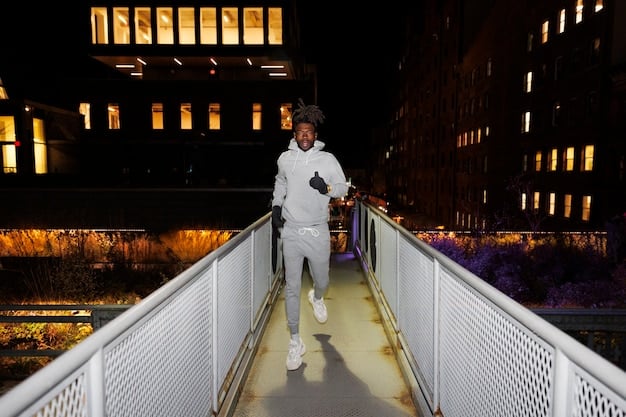
- Oversized Silhouettes: Relaxed and flowing garments that offer freedom of movement and a comfortable fit.
- Soft and Breathable Fabrics: Materials like Tencel, modal, and linen that provide a luxurious feel and enhance breathability.
- Supportive Footwear: Comfortable sneakers, cushioned sandals, and ergonomic boots designed for all-day wear.
- Adjustable Garments: Clothing with adjustable straps, drawstrings, and closures for a personalized and comfortable fit.
The comfort revolution is redefining urban style by prioritizing ease of movement, practicality, and a relaxed aesthetic. As consumers demand clothing that supports their active lifestyles, comfort will remain a driving force in fashion innovation.
The Blurring of Gender Norms
Traditional gender norms are dissolving in the realm of fashion, giving rise to a more fluid and inclusive urban style. In 2025, gender-neutral clothing and accessories will continue to gain prominence, reflecting a broader societal shift towards gender equality and self-expression.
Designers are creating garments that transcend traditional gender categories, offering versatile pieces that can be worn by anyone, regardless of their gender identity. This trend is empowering individuals to express themselves authentically and challenge conventional fashion expectations.
Unisex and Androgynous Designs
Unisex and androgynous designs feature clean lines, neutral colors, and versatile silhouettes that blur the boundaries between masculine and feminine aesthetics. These garments are designed to be worn by anyone, promoting inclusivity and self-expression.
- Gender-Neutral Collections: Brands launching collections specifically designed to be worn by individuals of all genders.
- Mix-and-Match Styling: Encouraging consumers to experiment with different styles and create their own unique looks, regardless of gender norms.
- Accessories for Everyone: Accessories like bags, hats, and jewelry that are designed to be worn by people of all genders.
Challenging Traditional Fashion Expectations
Fashion influencers and celebrities are using their platforms to challenge traditional fashion expectations and promote greater inclusivity. This visibility is helping to normalize gender-neutral clothing and inspire individuals to embrace their authentic selves through fashion choices.
The blurring of gender norms is transforming urban style into a more inclusive and expressive landscape. As fashion continues to evolve, it will increasingly reflect a diverse spectrum of identities and challenge traditional expectations.
These trends collectively paint a picture of an urban style landscape in 2025 that values sustainability, individuality, and comfort. By embracing these shifts, you can curate a wardrobe that is not only on-trend but also reflective of your unique values and personal style.
| Key Point | Brief Description |
|---|---|
| ♻️ Sustainable Fashion | Emphasis on eco-friendly materials and ethical production. |
| 📱 Tech Integration | Clothing with smart fabrics and wearable technology. |
| ✨ Hyper-Personalization | Unique style reflecting individual identities and stories. |
| 👖 Comfort Focus | Emphasis on relaxed silhouettes and ergonomic designs. |
FAQ
▼
Increased environmental awareness and ethical concerns among consumers are driving the demand for sustainable fashion. People are seeking brands with eco-friendly practices.
▼
Expect to see smart fabrics that regulate body temperature, wearable tech embedded in clothing, and personalized, digitally printed designs enhancing functionality and style.
▼
Hyper-personalization means embracing individuality through eclectic styles, body positivity, and customizable clothing, reflecting personal stories and rejecting conventional norms.
▼
Comfort is prioritized due to busy lifestyles and a desire for practicality. Athleisure influence, ergonomic designs, and functional fabrics meet the demand for ease and style.
▼
Gender-neutral clothing and accessories are gaining prominence, reflecting a societal shift towards gender equality and self-expression. Designers create garments wearable by anyone.
Conclusion
In conclusion, decoding the 2025 urban style shift reveals a fashion landscape shaped by conscious choices, technological integration, personalized expression, comfort, and inclusivity. These trends emphasize a move towards a more sustainable, individualistic, and practical approach to urban dressing.
